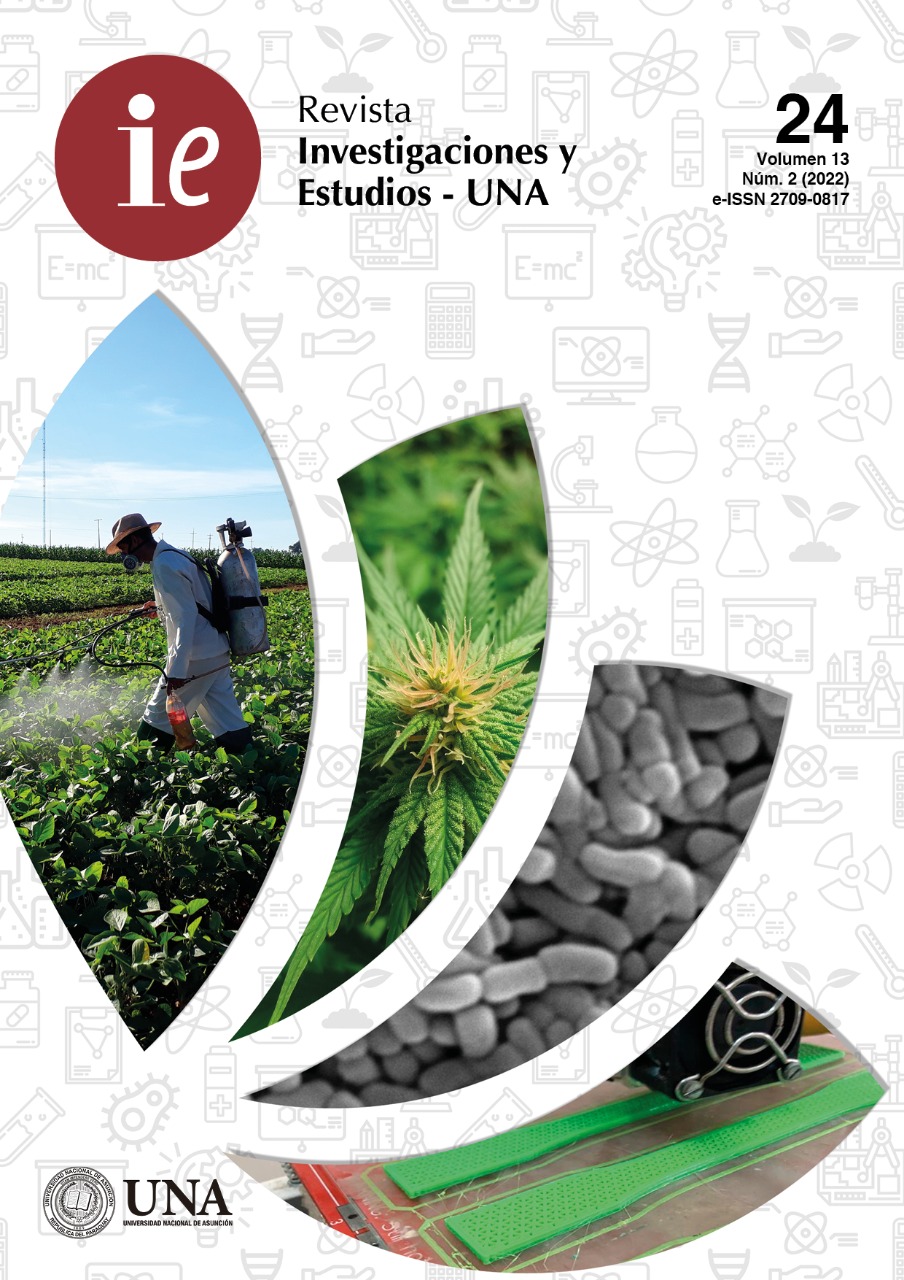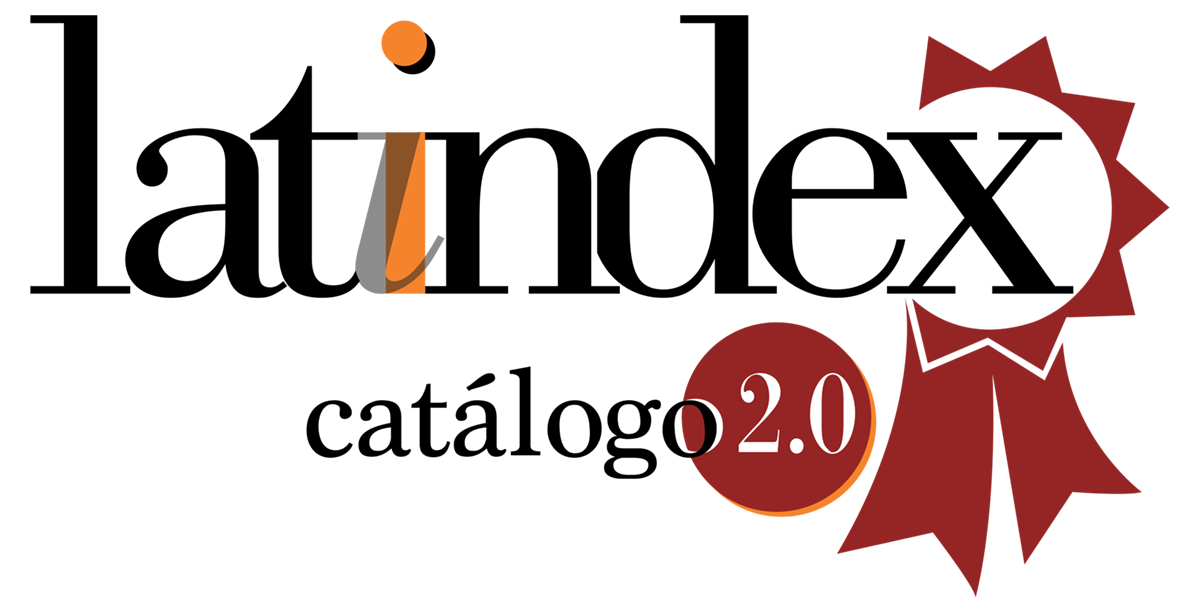Aislamiento y caracterización de levadura silvestre de frutas de Morus nigra para producción de bebidas alcohólicas regionales
DOI:
https://doi.org/10.47133/IEUNA22205bPalabras clave:
Mora, fermentación, azúcar residual, alcohol etílico, Saccharomyces cerevisiaeResumen
La fruta de la morera es no solo conocida por su exquisito sabor, sino también por sus cualidades nutricionales y elevado contenido de compuestos bioactivos. La elaboración de vino de mora es uno de sus múltiples usos. Con el objetivo de controlar el proceso de fermentación espontánea empleado en la elaboración de vinos artesanales, se procedió al aislamiento de levaduras silvestre en el jugo de mora. Se identificó por biología molecular Saccharomyces cerevisiae como especie predominante. El aislado M01-IX se caracterizó por su tolerancia al etanol y por cinética de consumo de carbohidratos. Los resultados muestran que M01-IX es capaz de consumir el 99% del azúcar presente en las condiciones ensayadas y podría ser empleado para producir bebidas fermentadas con un contenido de al menos 5% de alcohol.
Descargas
Referencias
Alonso González, E., Torrado Agrasar, A., Pastrana Castro, L. M., Orriols Fernández, I. & Pérez Guerra, N. (2010). Production and Characterization of Distilled Alcoholic Beverages Obtained by Solid-State Fermentation of Black Mulberry (Morus nigra L.) and Black Currant (Ribes nigrum L.). Journal of Agricultural and Food Chemistry, 58(4), 2529–2535. doi:10.1021/jf9037562
Altschul, S. F., Gish, W., Miller, W., Myers, E. W. & Lipman, D. J. (1990). Basic local alignment search tool. J. Mol. Biol., 215, 403–410.doi:10.1016/S0022-2836(05)80360-2
Chen, J. (2004). Manual de azúcar de caña (2 ed.). Limusa SA.
Darias-Martín, J., Lobo-Rodrigo, G., Hernández-Cordero, J., Díaz-Díaz, E. & Díaz-Romero, C. (2003). Alcoholic beverages obtained from black mulberry. Food Technology and Biotechnology, 41(2), 173–176.
Ding, J., Huang, X., Zhang, L., Zhao, N., Yang, D. & Zhang, K. (2009). Tolerance and stress response to ethanol in the yeast Saccharomyces cerevisiae. Applied Microbiology and Biotechnology, 85(2), 253–263. doi: 10.1007/s00253-009-2223-1
Gadagkar, S. R. & Call, G. B. (2015). Computational tools for fitting the Hill equation to dose–response curves. Journal of Pharmacological and Toxicological Methods, 71, 68–76. doi: 1016/j.vascn.2014.08.006
González-Leos, A., Del Angel-Del Angel, J. A., González-Castillo, J. L., Rodríguez-Durán, N. & Bustos-Vázquez, G. (2017). Evaluación de levaduras nativas productoras de etanol presentes en el bagazo de caña de azúcar. CienciaUAT, 11(2), 80. doi:10.29059/cienciauat.v11i2.791
Juan, C., Jianquan, K., Junni, T., Zijian, C. & Ji, L. (2012). The profile in polyphenols and volatile compounds in alcoholic beverages from different cultivars of mulberry. Journal of Food Science, 77(4), C430–C436. doi:10.1111/j.1750-3841.2011.02593.x
Karki, T. B., Timilsina, P. M., Yadav, A., Pandey, G. R., Joshi, Y., Bhujel, S., Adhikari, R.& Neupane, K. (2017). Selection and characterization of potential baker’s yeast from indigenous resources of Nepal. Biotechnology Research International, 2017, 1–10. doi:10.1155/2017/1925820
Kwak, E.J., Yeon Lee, J. & Sook Choi, I. L. (2012). Physicochemical properties and antioxidant activities of korean traditional alcoholic beverage, Yakju, enriched with mulberry. Journal of Food Science, 77(7), C752–C758.doi:10.1111/j.1750-3841.2012.02753.x
Lee, Y. J., Choi, Y. R., Lee, S. Y., Park, J. T., Shim, J. H., Park, K. H.& Kim, J. W. (2011). Screening wild yeast strains for alcohol fermentation from various fruits. Mycobiology,39(1), 33–39.doi:10.4489/MYCO.2011.39.1.033
Lima-Costa, M. E., Tavares, C., Raposo, S., Rodrigues, B. & Peinado, J. M. (2012). Kinetics of sugars consumption and ethanol inhibition in carob pulp fermentation by Saccharomyces cerevisiae in batch and fedbatch cultures. Journal of Industrial Microbiology and Biotechnology, 39(5), 789–797.doi:10.1007/s10295-011-1079-4
Makhoul, G., Mahfoud, H. & Baroudi, H. (2017). Some chemical characteristics of white (Morus alba L) and black (Morus nigra L) mulberry phenotypes in Tartus Syria. International Journal of Agriculture & Environmental Science, 4(2), 54–63. doi:10.14445/23942568/ijaes-v4i2p110
Mambuscay M., L. A., A. López A., W., M. Cuervo M., R. A., Argote V., F. E. & Osorio C., E. (2013). Identification of yeast in the native pineapple juice, blackberry and grape. Biotecnología en el Sector Agropecuario y Agroindustrial, 11(Num. Esp. 2), 136–144.
Matapathi, S. S., Patil, A. B., Jones Nirmalnath, P. & Savalagi, V. V. (2004). Isolation and screening of efficient yeast strains for wine making. Karnataka Journal of Agricultural Sciences, 17(4), 736–740.
Meijer, M. M. C., Boonstra, J., Verkleij, A. J. &Verrips, C. T. (1998). Glucose repression in Saccharomyces cerevisiae is related to the glucose concentration rather than the glucose flux. Journal of Biological Chemistry, 273(37), 24102–24107. doi:10.1074/jbc.273.37.24102
Peña, C. & Arango, R. (2009). Evaluación de la producción de etanol utilizando cepas recombinantes de Saccharomyces cerevisiae a partir de melaza de caña de azúcar. Dynarev.fac.nac.minas, 76(159), 153–161.
Ramírez-Cota, G. Y., López-Villegas, E. O., Jiménez-Aparicio, A. R. & Hernández-Sánchez, H. (2021). Modeling the ethanol tolerance of the probiotic yeast Saccharomyces cerevisiae var. boulardii CNCM I-745 for its possible use in a functional beer. Probiotics and Antimicrobial. Proteins, 13(1), 187–194. doi:10.1007/s12602-020-09680-5
Rivas, E.-M., Gil de Prado, E., Wrent, P., Silóniz, M.-I., Barreiro Elorza, P., Correa Hernando, E. C., Conejero, F., Murciano, A. & Peinado, J. M. (2014). A simple mathematical model that describes the growth of the area and the number of total and viable cells in yeast colonies. Letters in Applied Microbiology, 59(6), 594–603. doi:10.1111/lam.12314
Rodrigues, B., Peinado, J. M., Raposo, S., Constantino, A., Quintas, C., & Lima-Costa, M. E. (2015). Kinetic and energetic parameters of carob wastes fermentation by Saccharomyces cerevisiae: Crabtree effect, ethanol toxicity, and invertase repression. Journal of Microbiology and Biotechnology, 25(6), 837–844. doi:10.4014/jmb.1408.08015
Stanley, D., Bandara, A., Fraser, S., Chambers, P. J. & Stanley, G. A. (2010). The ethanol stress response and ethanol tolerance of Saccharomyces cerevisiae. Journal of Applied Microbiology, 109(1), 13–24. doi:10.1111/j.1365-2672.2009.04657.x
Tao, Y., Wang, Y., Yang, J., Wang, Q., Jiang, N., Chu, D. T., Han, Y. & Zhou, J. (2017). Chemical composition and sensory profiles of mulberry wines as fermented with different Saccharomyces cerevisiae strains. International Journal of Food Properties, 20(00), 2006–2021. doi:10.1080/10942912.2017.1361970
Thompson, J. D., Higgins, D. G. & Gibson, T. J. (1994). CLUSTAL W: improving the sensitivity of progressive multiple sequence alignment through sequence weighting, position-specific gap penalties and weight matrix choice. Nucleic Acids Research, 22(22), 4673–4680. doi:10.1093/nar/22.22.4673
Tikka, C., Osuru, H. P., Atluri, N., Raghavulu, P. C. V., Yellapu, N. K., Mannur, I. S., Prasad, U. V., Aluru, S., Varma K. N. & Bhaskar, M. (2013). Isolation and characterization of ethanol tolerant yeast strains. Bioinformation, 9(8), 421–425. doi:10.6026/9732063 0009421
Varakumar, S., Naresh, K., Variyar, P. S., Sharma, A., & Reddy, O. V. S. (2013). Role of malolactic fermentation on the quality of mango (Mangifera indica L.) Wine. Food Biotechnology, 27(2), 119–136. doi:10.1080/08905436.2013.781506
Wang, C., Yin, L.-Y. Y., Shi, X.-Y., Xiao, H., Kang, K., Liu, X. Y., Zhan, J. C., & Huang, W.-D. (2016). Effect of cultivar, temperature, and environmental conditions on the dynamic change of melatonin in mulberry fruit development and wine fermentation. Journal of Food Science, 81(4), M958–M967.doi:10.1111/1750-3841.13263
Wang, C-Y, Liu, Y.-W., Jia, J.-Q., Sivakumar, T. R., Fan, T., & Gui, Z.-Z. (2013). Optimization of fermentation process for preparation of mulberry fruit wine by response surface methodology. African Journal of Microbiology Research, 7(3), 227–236. doi:10.5897/AJMR12.2090
White, T., Bruns, T., Lee, S. & Taylor, J. (1990). Amplification and direct sequencing of fungal ribosomal RNA genes for phylogenetics (PCR-Prot). Academic Press.In M.A Innis., D. H Gelfand,. J.J. Shinsky and White, T.J., Eds., PCR. Protocols: A Guide to Methods and Applications, Academic Press, Inc., New York. doi: 10.1016/b978-0-12-372180-8.50042-1
Yang, J. &Tavazoie, S. (2020). Regulatory and evolutionary adaptation of yeast to acute lethal ethanol stress. PLOS ONE, 15(11), e0239528.doi:10.1371/journal.pone.0239528
Yezbick, G., Ahn-Jarvis, J., Schwartz, S. J.&Vodovotz, Y. (2013). Physicochemical characterization and sensory analysis of yeast-leavened and sourdough soy breads. Journal of Food Science, 78(10), 1–17. doi:10.1111/1750-3841.12246.
You, K. M., Rosenfield, C.-L. &Knipple, D. C. (2003). Ethanol tolerance in the yeast Saccharomyces cerevisiae is dependent on cellular oleic acid content. Applied and Environmental Microbiology, 69(3), 1499–1503. doi:10.1128/AEM.69.3.1499-1503.2003
Publicado
Número
Sección
Licencia
Derechos de autor 2022 Pablo Francisco Martina, Dario Jorge Ferreyra

Esta obra está bajo una licencia internacional Creative Commons Atribución 4.0.


















